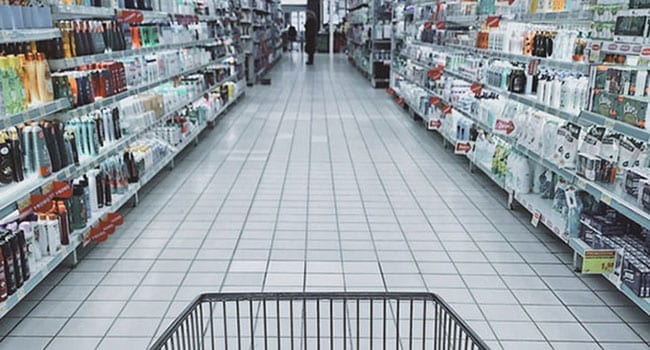 Restaurants are hard hit by the COVID-19 crisis. Many won’t recover and some are already closed for good. And grocers, despite the influx of millions of new dollars, are managing unprecedented pressure points.
Restaurants are hard hit by the COVID-19 crisis. Many won’t recover and some are already closed for good. And grocers, despite the influx of millions of new dollars, are managing unprecedented pressure points.
Grocers are in a high-volume, low-margin business. The $80 billion shifting over from the decimated food service industry may have been a godsend at the beginning. However, the COVID-19 crisis has been anything but easy for the industry.
Before the crisis, according to a survey by Angus Reid, 18 per cent of Canadians either avoided the grocery store or intended to avoid it. However, 52 per cent now tell pollsters they intend to avoid the grocery store. And 20 per cent of those polled say they’re shopping for someone else. This is up from four per cent prior to COVID-19. That’s an incredible jump.
In a period of one month, what was pleasant social spacing at the grocery store is now seen as an inherent health threat by many.
Unlike other supply chains, grocery stores are open systems. Everyone has access. Anyone can come in, touch anything and everything, and leave. That’s scary during a pandemic.
We still know very little about COVID-19 and how it’s transmitted, or how long it survives on certain surfaces. There are many unknown factors that make it difficult for grocers to manage risks.
With masks, glass partitions, new cleaning protocols and a change in foot traffic in stores, grocers have coped well so far. Stores are likely cleaner than operating rooms. Expectations have changed and grocers are complying.
Salaries are also going up to compensate employees for doing things differently. And let’s be honest: working in a grocery store today entails more risk than just a few weeks ago. So the anxiety for employees also has to be addressed. In the last week alone, more than 40 grocery stores across the country closed because at least one employee contracted the virus.
The outbreak is also affecting processing. Olymel in Yamachiche, Que., F. Ménard in Ange-Gardien, Que., and Maple Leaf in Brampton, Ont., all shut down plants for days due to employees contracting the virus.
Put the Canadian economy back to work by David Fuller
Communities may be inconvenienced by some of these closures but the measures taken mean food security isn’t compromised.
In just a few weeks, grocers have also had to deal with different consumer demands. Instead of accommodating shoppers looking for quick fixes for lunch, dinner or the following day, stores must now serve customers looking for cooking ingredients. Home cooking is clearly part of most people’s lives now.
So we shouldn’t be surprised to see shortages of staples such as flour, yeast, eggs, sugar and butter. However, supply chains are slowly replenishing shelves.
But committing to the new normal is the challenge for grocers when things return to where they were. Eventually, consumers will need less flour, butter and other ingredients. It’s hard to commit to capital projects when the effects of the pandemic could be temporary.
Yet some things may become permanent.
Canada’s traditional grocers reluctantly developed online strategies. Before Amazon’s acquisition of Whole Foods in 2017, the main fixation for most players in the industry was foot traffic. The more people who visited stores, the better.
Last year, a survey by Dalhousie University suggested that barely four per cent of Canadians were considering buying food online. But as of April 8, 22 per cent of Canadians are thinking of buying food online regularly, including after the crisis is over.
Accommodating online shoppers is no longer just about convenience. It’s also about safety and risk perceptions.
The in-store grocery experience of the future is clearly uncertain. Few know what or how COVID-19 will forever change the way grocery stores are operated. But some things we’re accustomed to, like ready-to-eat displays and self-serve counters, will certainly face a rethink.
On the other side of the pandemic, grocers will have some serious work to do, and it will be difficult to overlook the stay-at-home trends in the marketplace.
On the bright side, people are cooking more and saving money – lots of money. But the food service sector will eventually be back and all of us will want to treat ourselves.
During this crisis, grocers are delivering – and delivering big. But the aftermath will be incredibly challenging.
Dr. Sylvain Charlebois is senior director of the agri-food analytics lab and a professor in food distribution and policy at Dalhousie University.
Sylvain is a Troy Media Thought Leader. Why aren’t you?
The views, opinions and positions expressed by columnists and contributors are the author’s alone. They do not inherently or expressly reflect the views, opinions and/or positions of our publication.

